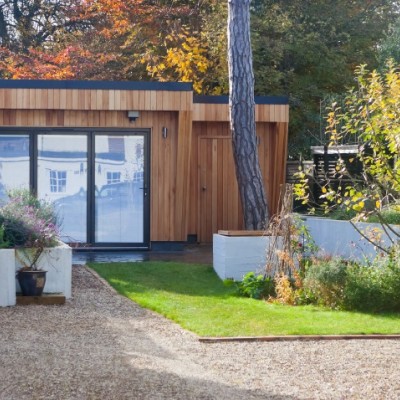10 rental market trends landlords should be aware of from the new English Housing Survey

Every year, the Government publishes the latest information from its continuous research into the nation’s housing. The English Housing Survey covers any changes in tenure, the condition of properties and their energy efficiency, and it offers a really good insight into market trends – both good and bad.
In the 2020/21 report, released in December 2021, the Government notes that the data may be a little skewed due to the pandemic. This is because the number of people feeding into the report is down and for much of the year surveyors couldn’t be sent into people’s homes.
However, there is still plenty of useful information to help landlords understand the general trends in housing.
What are the most useful 10 rental trends covered by the English Housing Survey?
- What proportion of people live in different tenures
- Who lives in each tenure by age
- Working patterns of private renters
- Cost of renting
- How much tenants spend on rent
- Level of rent arrears
- Time tenants stay in a rental home
- Property space
- Condition of rental properties
- Specific information on London renters
These statistics are useful because they not only give a snapshot of the current rental market in England, but also show whether and how trends are changing over time. This can help landlords see whether they might need to change their investment or letting strategy.
The Private Rented Sector is holding steady
Over the last 18 months there have been some reports that increasing numbers of landlords are selling up and it’s obvious that the Government is keen to reduce the size of the Private Rented Sector (PRS) in favour of people buying their own homes.
However, this has yet to be picked up by the English Housing Survey figures. Although there was a small fall in the proportion of people renting privately back in 2015/16 – from 20% to 19% – since then, the number of households renting privately has remained steadfast at 4.4 million.
In terms of the proportion of homes being rented, there is a clear difference between London and the rest of England. 27% of properties are rented privately in the capital, versus 17% in the rest of the UK, but that’s not surprising given that major cities typically have a more transient population.
In all, these figures clearly show that the PRS is here to stay and has a steady share of the property market.
How wide an audience does your rental property appeal to?
Although renting is often thought of as a more popular tenure for younger people, while those in middle age and above are more likely to own, it’s worth knowing that this trend shows signs of shifting.
Between 2019/20 and 2020/21, the proportion of 25 to 34-year-olds renting actually fell, from 42% to 37%, and those in this age bracket are now more likely to be property owners than tenants. Meanwhile, over the last decade, the proportion of 45 to 64-year-olds renting has increased by around 5%.
As always, the most important thing is to focus on who the best local renters are – whether that’s better-off older tenants or younger ones – and aim to meet the strongest local demand. But these English Housing Survey results also suggest that you shouldn’t limit your rental appeal to someone under 34, as you may miss out on the 20%+ of potentially excellent older tenants.
Can tenants continue to afford your rent?
Most people (73%) of private tenants are working, but you might be surprised that only 58% work full-time, while 15% are part-time.
You might also not be aware that of the 4.4 million households in the PRS, 1.1 million are in receipt of Housing Benefit (26% of private tenants) and the number of unemployed tenants rose from 3% to 7% between 2019/20 and 2020/21. Together with the unfolding cost of living crisis – primarily through rising utility costs – it could be a tough year for some renters to afford their payments, which averaged £858 per month in 2020/21 (£1,473 in London).
Nevertheless, although 25% of private tenants said they were finding it either ‘fairly’ or ‘very’ difficult to afford their rent, just 3% reported being in arrears and only 4% reported they had fallen behind with rent payments in the 12 months prior.
Overall, the PRS remains affordable, costing tenants just over 31% of their income, compared to 27% of income for those renting socially. Homeowners with mortgages do pay proportionally less, but renters also have fewer outlays – such as property repairs – and they don’t need to save a large deposit to buy a home. Typically, paying around a third of income on housing costs is considered ‘affordable’, although rents in areas with high average property prices, such as London and the Home Counties, are likely to represent a higher proportion of tenants’ incomes, making affordability tougher.
So, if you’re taking on a new tenant this year, it’s important to check (or let us do this for you) that they will be able to afford the rent, even with increased bills. It’s also worth considering taking out rent guarantee insurance (or checking your existing insurance policy) to make sure you will continue to receive rental income if your tenant can’t afford to pay.
Are tenants staying put or planning to move on?
The survey revealed that renters, on average, had been living in their current home for 4.2 years. However, 61% said they were keen to buy in the future – half within the next two years and the rest within five years. So, given that your tenant(s) are likely to move on at some point, it’s important to make sure you know whether the property is in a good enough condition that it will re-let quickly, or if work is required to let it to the best tenant(s).
Making sure a property is ready for let
It’s not just about making sure the décor is up to date. The survey suggests that properties in the PRS – 23% of which were built pre-1919 – are more likely to have what’s called ‘a Category 1 hazard’, where a property defect such as excess cold or damp/mould is considered to have a “serious and immediate risk to a person’s health and safety”. Around 12% of private rentals are believed to have a Category 1 Hazard, versus 10% of owned homes and just 5% of properties in the social sector.
Other hazards include: condensation, asbestos, anything that could cause a tenant to fall (such as a fraying carpet on the stairs) and anything that could prevent a tenant from being able to escape if there was a fire. And in the case of fire, it’s worth knowing that 27% of private tenants (and a similar number in the social sector) fed back that they had never tested their smoke alarm. These are all key factors that should be addressed before a property is let out.
Whatever your lettings strategy is for 2022, do talk to our local experts about changes in demand and supply, affordability and issues with property condition which could affect letting your property. You can contact your local office by email, phone or pop in and see us.
Looking for advice?
If you're looking to let or sell your property, we can help. Get in touch with your local branch or book in for a property valuation.

Contact Us
Got a question, general enquiry or something else?
You may also like



